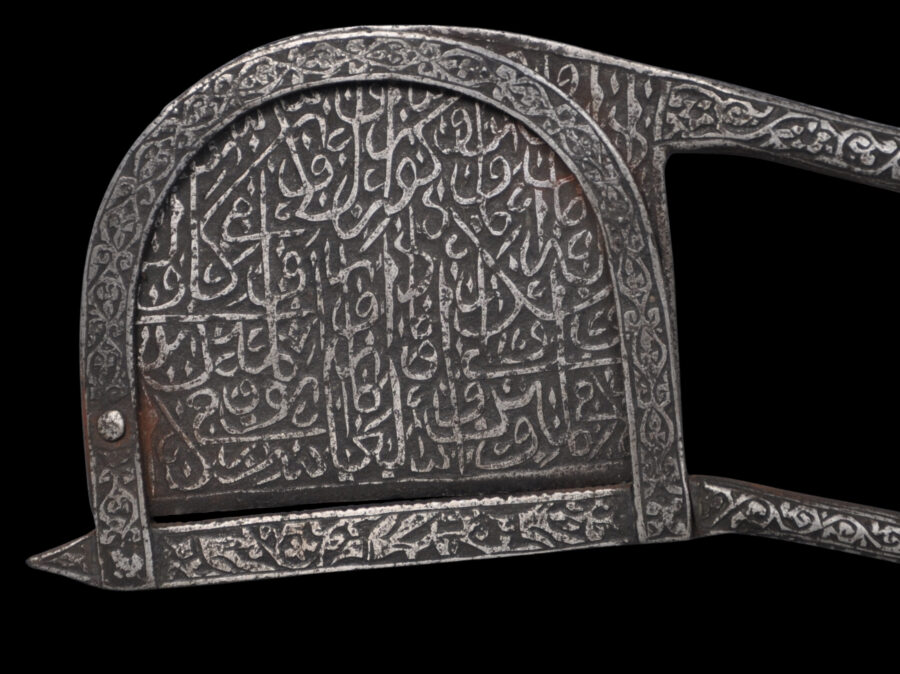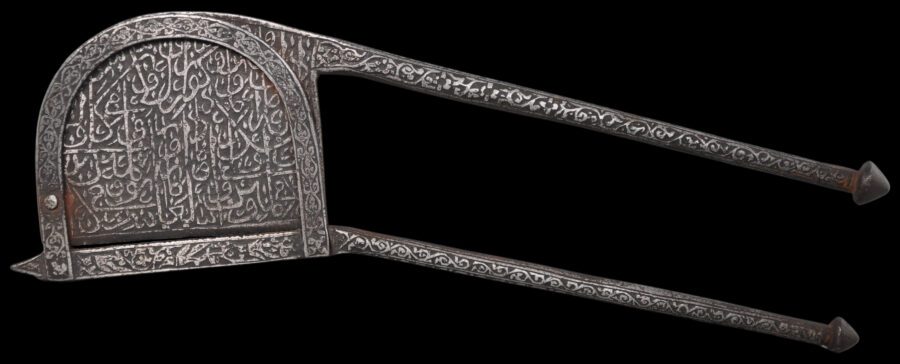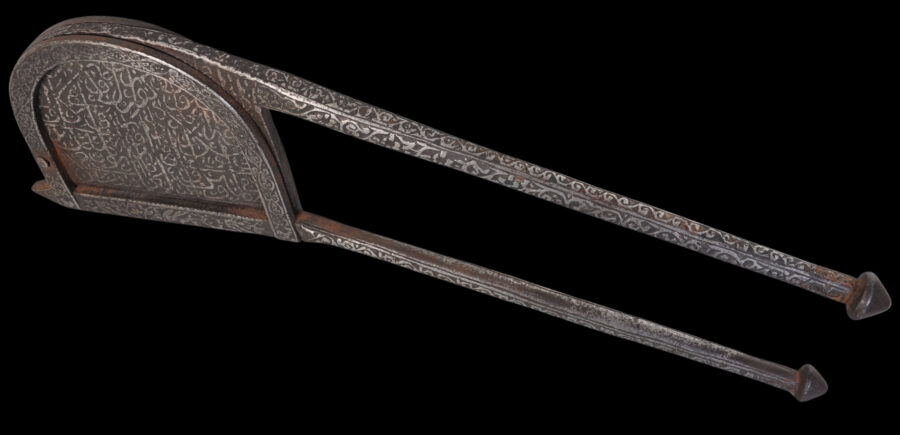Enquiry about object: 9514
Large Persian Calligraphic Steel Sheers to Cut Block Sugar
Persia (Iran) 17th-18th century
length: 35.9cm, width: 10.8cm, weight: 1,011g
Provenance
European art market
This large pair of sheers is designed to cut dense, solid blocks of sugar into more useable sizes. It has the form of a betel or paan cutter seen in India and Burma, but is too large for betel.
It comprises a large arch-shape frame through which the blade passes, and two long handles with bud like finials. It is hinged at the end so that it can operate with a slicing mechanism. The handles are essentially of rounded square form.
The blade is decorated on both sides in low relief with Persian script with Koranic invocations. The frame and the handles are decorated in low relief with leafy scrollwork, including the exterior sides of the handles.
Persia has a long history of steel making (steel is simply iron with a small amount of carbon added. It is then hardened by plunging it into water when red hot.) Steel is much harder than iron and so was used by the Persians to make sword blades, armour and other non-arms related items such as the sheers here, padlocks, buckles and kohl flasks.
The decoration on the sheers here is similar to that on a lock attributed to 17th century Isfahan and illustrated in Allan (2000, p. 42), a 15th century mirror (p. 56), and a 17th century balance or scales bar (p. 101).
The cutter shows ample evidence of age and wear, and is in fine condition.
References
Allan, J.W., Persian Steel: The Tanavoli Collection, Yassavoli Publications, 2000.








